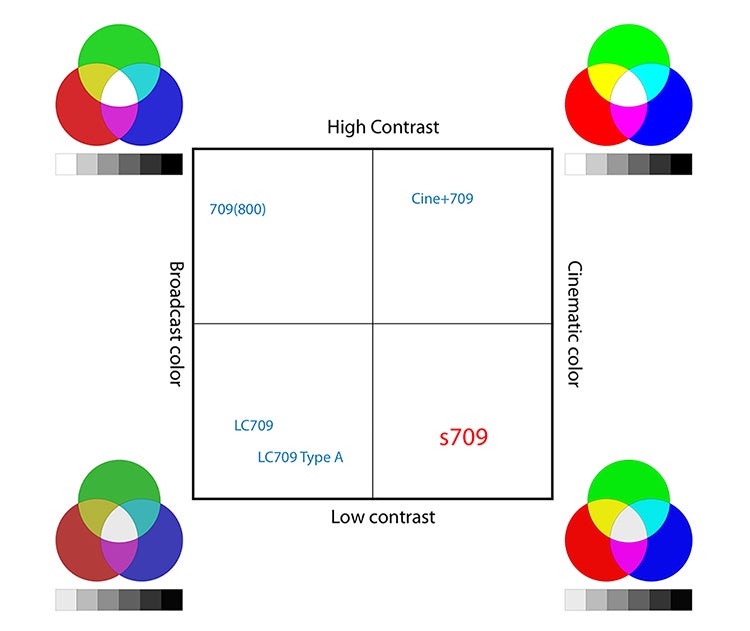
06-25-2019 - Technology
Sony S709 Look Up Table - Characteristics - Part Two of Five
By: SonyCine Team
s709:
s709 positions in the “Low contrast” and “Cinematic color” region in the contrast-color chart to the right. This look provides subtle and well-rendered skin tones, with a tone curve close to film characteristics, and low contrast.
709(800):
This look provides high contrast with broadcast colors. With the introduction of VENICE this look has been renamed “R709”.
LC-709, LC-709TypeA:
These look profiles provide low contrast with broadcast color.
Cine+709 as Look Profile
Subtle colors, with high contrast and a tone curve close to film characteristics.
Look Profiles are intended to provide an easier starting point for color grading in television production workflows. It utilizes and maximizes Sony F65 and PMW-F55 capabilities of wide latitude and wide color reproduction.
It is recommended that s709 is used for cinema and television production, while R709 is used for monitoring images that are closer to the actual look with high contrast compared to those of the s709, and has been designed to work with F65/F55 workflows.


Tone Curve
s709 has a low contrast tone curve to deliver soft tonal look in the image. The shadows and midtones have relatively natural responses, while the highlights are compressed to preserve wide latitude in the camera, and specular highlights in the scene.
The diagrams on the right compare the s709 and 709(800) tone curves. The s709 has a lower contrast curve than 709(800), and preserves highlights.

The s709 cube
The s709.cube is optimized for a Rec.709 monitor. If you use the look with a P3 monitoring device (e.g. projector) at a post-production house, please use one of the following P3 cubes that is appropriate for the white point of your projector.
Color Characteristics
s709 has a softer, lower saturated image and renders colors closer to the characteristics of film. It delivers soft and subtle skin tones with smooth gradation.





